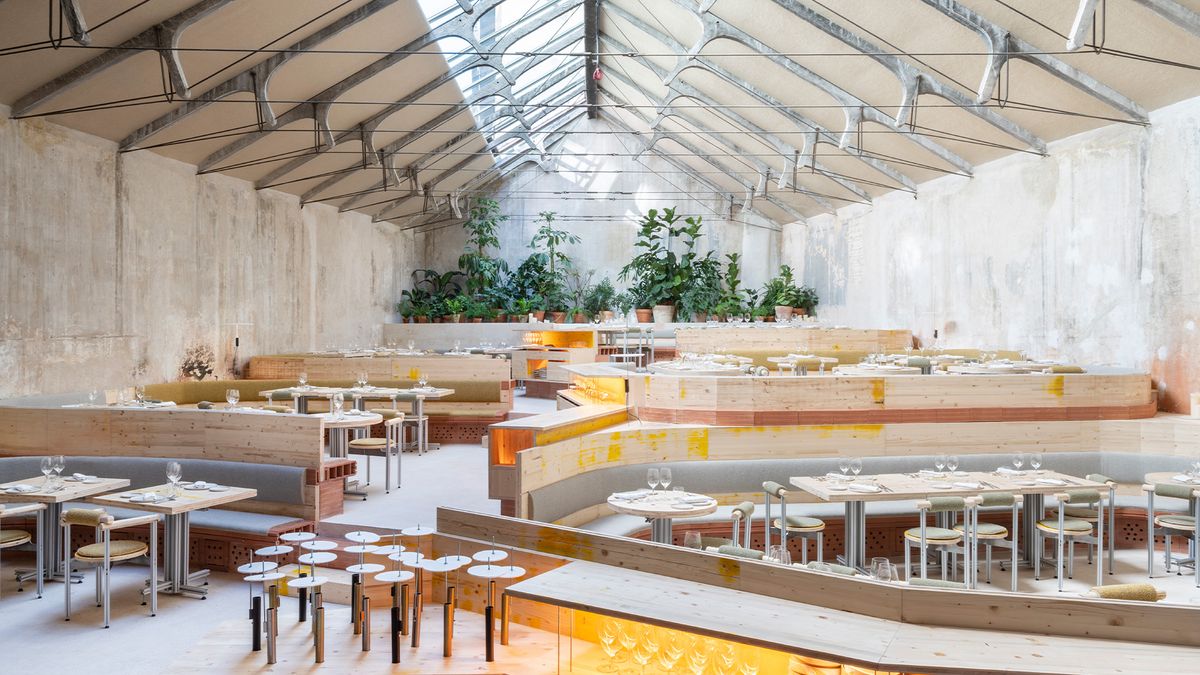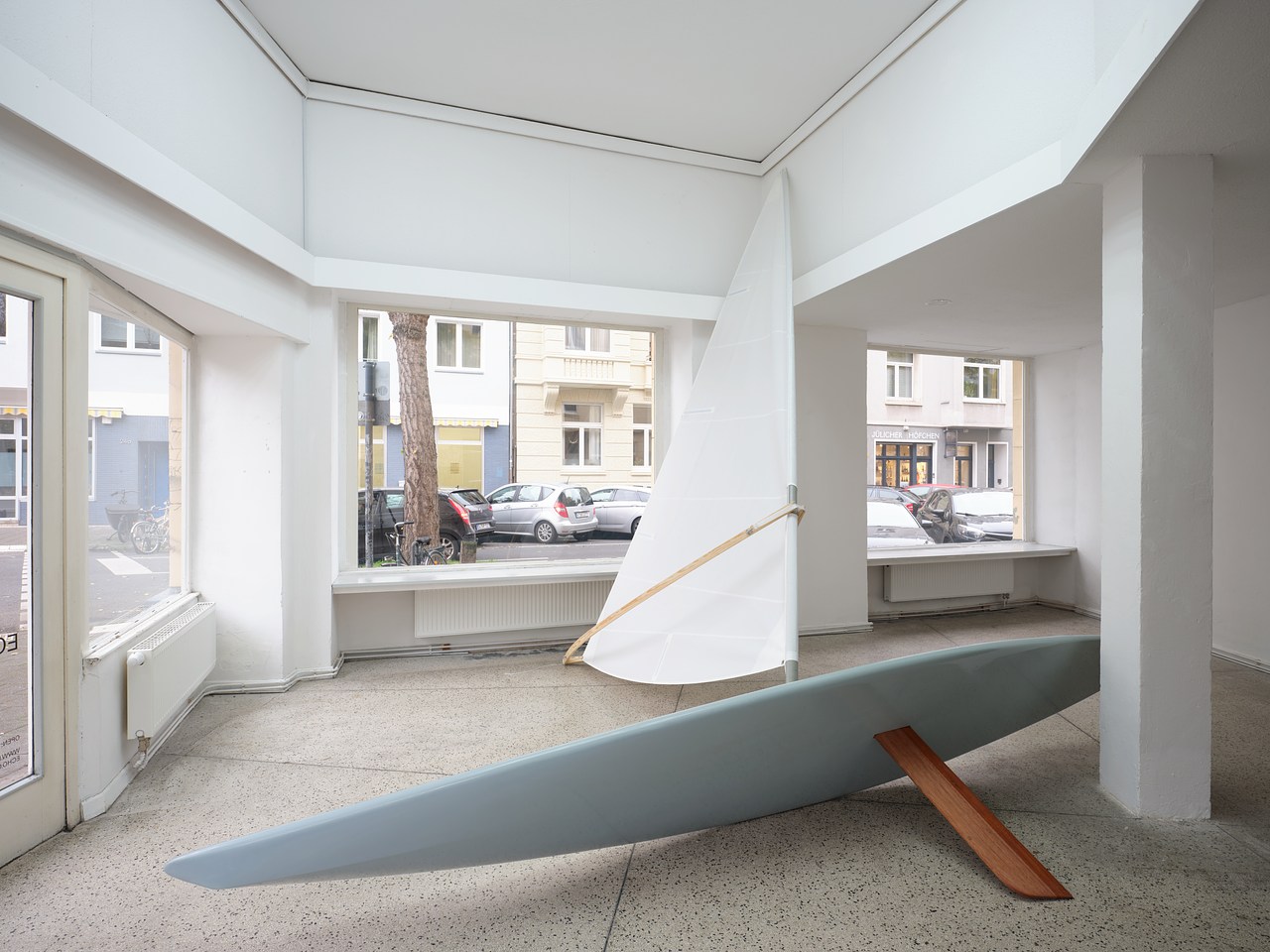Imagine How Many
2017 - Textile (Textile)
172.09 x 238.76 cm.
Margo Wolowiec
Imagine How Many by Margo Wolowiec is a woven polyester depiction of blurred text and floral images found on social media, distorted beyond complete recognition. It resembles a newspaper with a conspicuous “fold” down the middle, but its contents are undoubtedly drawn from Wolowiec’s practice of image aggregation and do not follow the clear formatting newspapers normally possess. Instead, Wolowiec has created an alternative publication of sorts, drawing in a third, comparative source of “networked” imagery and information, inserting the concept of publication and social media into her greater examination of the structures governing dissemination.
Margo Wolowiec uses her multidisciplinary practice to examine space, material versus conceptual practices, and affective responses. Working predominantly with textiles, the artist aggregates “non-images” and controversial texts from the internet, she then creates complex, visually fragmented fabric compositions, which cut in and out like static. She analogizes the networked layering of woven fibers with the technological networks from which she draws her images, articulating a novel, analog means of imagining and relating to the greater technological ontology upon which contemporary society depends. Her forms are largely sourced from visualizations of glitches and aberrations found on Internet-based social networking platforms such as Instagram, Facebook, and Tumblr. In translating pixelated images into fiber art through painstaking technique of hand dye and weaving, Wolowiec offers a wholly original response to producing art in the digital age by narrowing the gap between traditional practices of handcraft and contemporary modes of image making offered through new media technologies.
Colors:
Related works sharing similar palette

© » KQED
A 49ers Anthem Charges Back From the ’80s for Super Bowl Sunday | KQED Skip to Nav Skip to Main Skip to Footer upper waypoint Arts & Culture A 49ers Anthem Charges Back From the ’80s for Super Bowl Sunday Rae Alexandra Feb 7 Save Article Save Article Failed to save article Please try again Email A 49er and a Dolphin dancing* at the 1985 Super Bowl to classic Narada Michael Walden track, ‘We’re the 49ers.’ [*This is a lie.] (Focus on Sport via Getty Images) Look...

© » KADIST
Masaya Chiba
2011Fairy #2 (2011) depicts a surreal scene of roughly assembled household ephemera, potted plants, and a faintly visible figure rendered in thin red line...

© » ARTS EQUATOR
Latiff Mohidin’s “Langkawi”: The Within and Beyond | ArtsEquator Thinking and Talking about Arts and Culture in Southeast Asia Articles Image: Chan + Hori Gallery July 10, 2018 By Gerald Sim (1,500 words, eight minute read) As with any thought-provoking installation, Latiff Mohidin’s “Langkawi” series, on show at Chan+Hori Contemporary , evokes a large range of perceptions from its audience...

© » KADIST
Pierre Leguillon
2008End of 2008, Pierre Leguillon presented at KADIST, Paris the first retrospective of the works of Diane Arbus (1923-1971) organized in France since 1980, bringing together all the images commissioned to the New York photographer by the Anglo-American press in the 1960s...

© » KADIST
Rodrigo Torres
2016In his Conceito abstrato series, however, Rodrigo Torres turns to the abstract, using the shapes, numbers, lines, and subtle colors of international currencies to create non-representational forms with lavish geometries and baroque curving forms....

© » KADIST
Daniel Boccato
2016Parrot Drawings or Paintings look like children’s drawings and seem quite innocent...

© » ARTS EQUATOR
Weekly Southeast Asia Radar: Why I sing in English; how Cambodian art can survive | ArtsEquator Thinking and Talking about Arts and Culture in Southeast Asia ArtsEquator Radar Nyein Su Wai Kyaw Soe | Frontier March 12, 2020 ArtsEquator’s Southeast Asia Radar features articles and posts about arts and culture in Southeast Asia, drawn from local and regional websites and publications – aggregated content from outside sources, so we are exposed to a multitude of voices in the region...

© » ARTS EQUATOR
Weekly Picks: Indonesia (9 - 15 July 2018) | ArtsEquator Thinking and Talking about Arts and Culture in Southeast Asia Indonesia July 9, 2018 Top Picks of Indonesia art events in Bali, Yogyakarta and Jakarta from 9 – 15 July 2018 Titian Art Space in Bali presents the exhibition Mokoh for the house of Mondo ...

© » KADIST
Matthew Angelo Harrison
2015In Hole #1 a zebra scull stands in as a representation of Africa, while the plexiglass box and the hole made through it represent the inaccessibility of that culture to African-Americans....

© » LE MONDE
« On ne démocratise pas le rapport à la musique, à la danse en les réduisant à un “éveil musical ou dansant” » Offrir Le Monde F in octobre tombait une nouvelle pour le moins sidérante : le directeur académique des services de l’éducation nationale en Indre-et-Loire annonçait le démantèlement des classes à horaires aménagés musique et danse ( CHAM et CHAD ), de la 6 e à la 3 e , du lycée Paul-Louis-Courier, de Tours, au nom de la mixité sociale et scolaire...

© » KADIST
Marcelo Cidade
2010Marcelo Cidade’s sculpture Abuso de poder (Abuse of Power, 2010) is a mousetrap elegantly crafted in Carrara marble...









